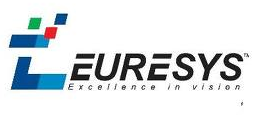SPECIFICATIONS
CAMERA/VIDEO INPUTS
| Interface standard(s) | CoaXPress 1.0, 1.1 and 1.1.1 |
| Connectors | Four DIN1.0/2.3 75 Ohms CXP-6 |
| Status LEDs | One CoaXPress Host connection status LED per connection |
| Number of cameras | Area-scan cameras:
Line-scan cameras:
|
| Maximum aggregated camera data transfer rate | 25 Gbit/s (2,500 MB/s) |
| Supported CXP down-connection speeds | 1.25 GT/s (CXP-1), 2.5 GT/s (CXP-2), 3.125 GT/s (CXP-3), 5 GT/s (CXP-5),
and 6.25 GT/s (CXP-6) |
| Number of CXP data streams (per camera) |
|
| Maximum CXP stream packet size | 16,384 bytes |
| PoCXP (Power over CoaXPress) | PoCXP Safe Power:
On-board 12V to 24V DC/DC converter A +12V power source must be connected to the AUXILIARY POWER INPUT connector using a 6-pin PEG cable |
| Camera types | Area-scan cameras:
Line-scan cameras and contact imaging sensors:
|
| Camera pixel formats supported |
|
ONBOARD PROCESSING
| On-board memory | 1 GB |
| Image data stream processing |
|
| Flat-field correction | Only available with the ‘1-camera’ and ‘1-camera, line-scan’ firmware variants |
| Input LUT (Lookup Table) | Available on all the firmware variants but ‘1-camera, 4-data-stream’:
|
| Bayer CFA to RGB decoder | ‘1-camera’ firmware variant:
‘2-camera’ firmware variant:
|
| Data stream statistics | Measurement of:
Configurable averaging interval |
| Event signaling and counting | The application software can be notified of the occurrence of various events:
Custom events sources:
Each custom event is associated with a 32-bit counter that counts the number of occurrences The last three 32-bit context data words of the event context data can be configured with event-specific context data:
|
C2C-LINK
| Description |
|
| Specification | C2C-Link synchronizes cameras connected to:
Maximum distance:
Maximum trigger rate:
Trigger propagation delay from master to slave devices:
|


